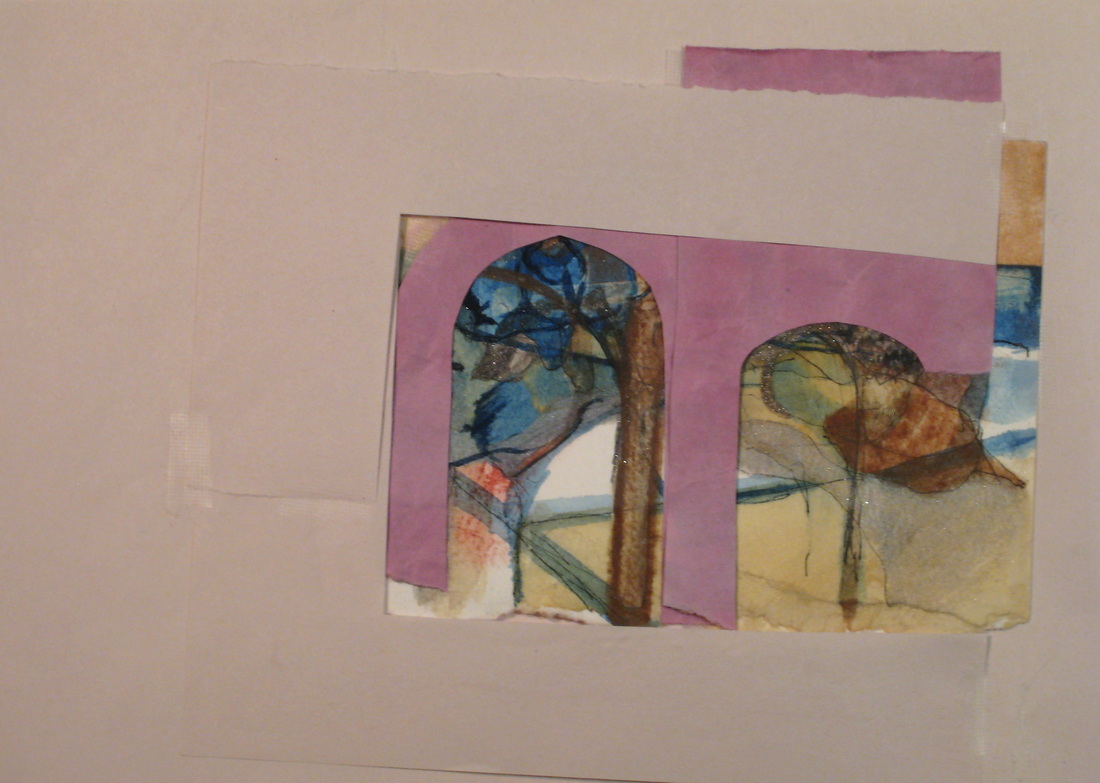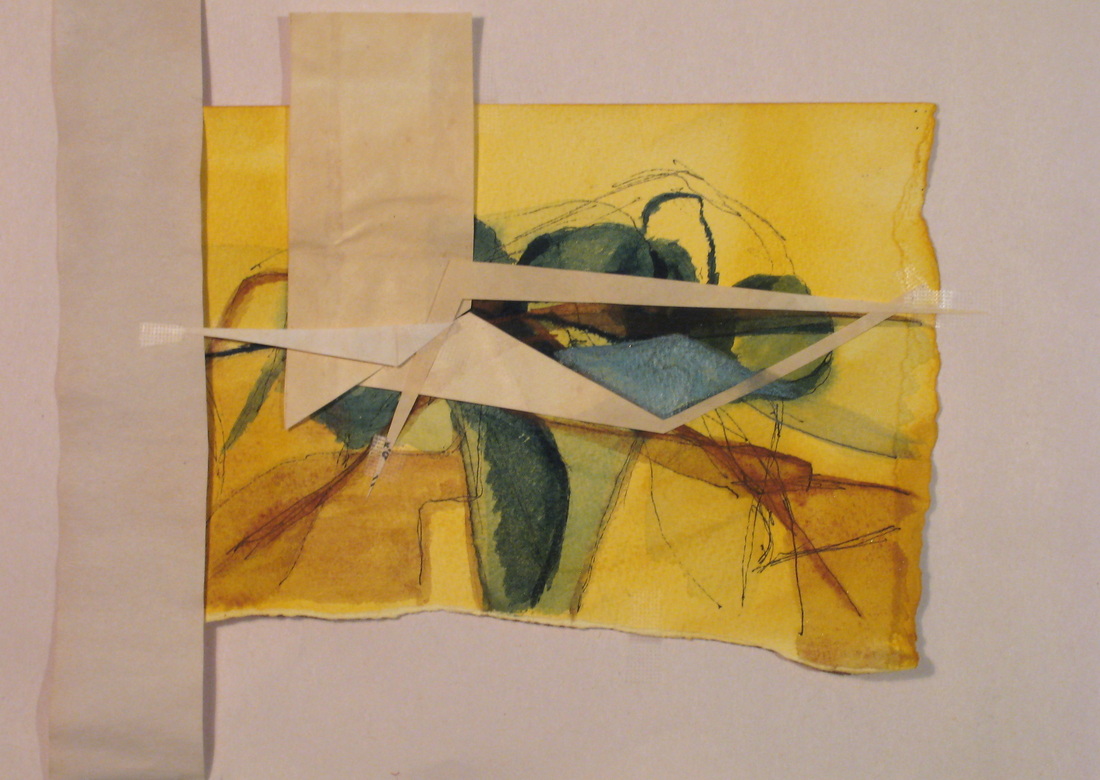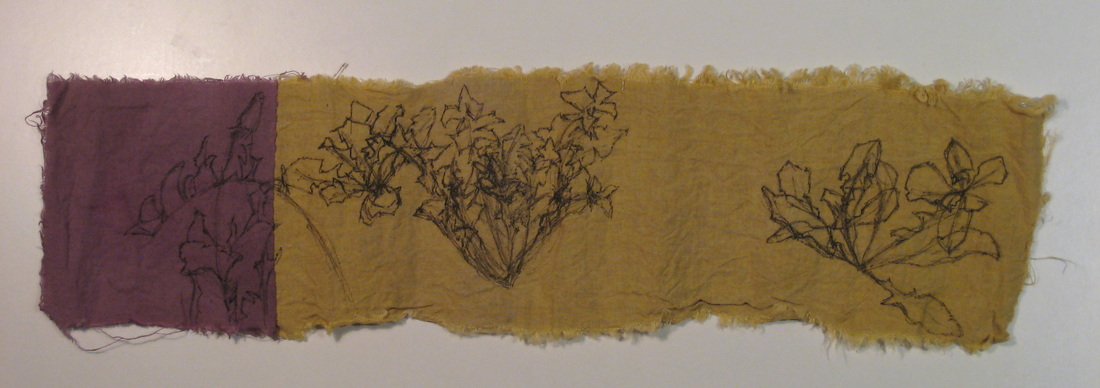Disruption
We talked about disruption. I disrupt the surface of the materials I work with, fragmenting any image that sits on them, to draw attention to the dichotomy between image and object. Sometimes I am too precious in this action. I am conscious of wanting to produce something finished, presentable. With drawings or paintings that I think are successful the disruption can be timid, as I am concerned to destroy something I like and which, therefore, others might value too. My ‘good taste’ overrides my interest in exploring a conceptual framework.
In the sketches that I showed in my last blog entry Window on the world we agreed that the collage which was most successful was the third work down, a drawing I disliked at each stage until the last. While that which doesn’t work was above it, second from the top, because it is half-hearted. So I have reworked, several times, the drawing I was too precious to disrupt at first to reach a point where I feel that the image is fragmented and yet, elements of it are reinforced by the editing that the collage provides (below).
The second area that we discussed was influences. I am concerned that I have too many; that I flit from one area of interest to another in my work in a scattergun way, my head turned by each little thing which catches my attention. I feel that this means I’m not always clear in my own mind about the subject matter of my work, which means that others can’t be either.
Condensing them down afterwards I came up with a number of dichotomies that I play with in my work:
domestic/interior and landscape/exterior
artifice and natural
detail and distance
masculine and feminine
dyeing and painting
unpicking and sewing
In our conversation, we differed in our opinion of whether this is problematic or not. Trying to achieve a more focused list of influences may be artificially constraining, too concentrated to sustain my interest for long. Which would I drop? How many interests would make me sufficiently focused? On the other hand more concentration might help me to navigate what I am doing and would give me the opportunity to plunge deeper into individual themes and dichotomies. While I have the luxury of time now, this won’t be the case when I return to work next year, and is something I need to consider for me to be able to sustain a more productive practice in the future.
In the meantime, I have started to draw weeds, like the dandelions shown below. Thankfully not a new area of interest, but something detailed which counterbalances the distant, moving landscapes I have been drawing over the past couple of years. It is not the best choice of subject with autumn already here, but it feels very fitting for Berlin - a city in various states of renovation but also of decay, with nature taking over in parts. For me, weeds are the pioneers in this process, literally breaking the ground for other plants to follow. Michael Landy, who did a serious of life-sized etchings of weeds in 2002 called Nourishment, has described weeds as 'marvellous, optimistic things' which 'have to be adaptable ... to prosper'.



 RSS Feed
RSS Feed
